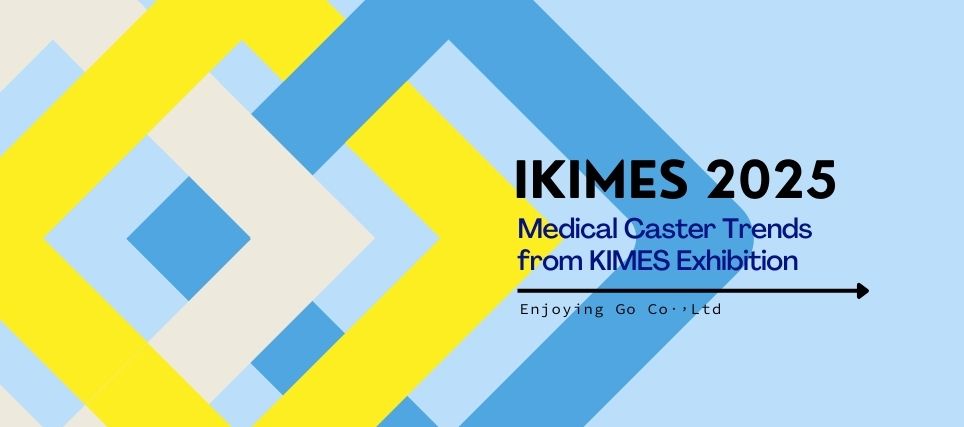【Exhibition Insights】Medical Caster Trends from KIMES Exhibition: Elevating the Future of Medical Mobility
In March, the Enjoying Go team visited the KIMES Exhibition (Korea International Medical & Hospital Equipment Show) in Seoul, South Korea—one of Asia’s largest and most influential exhibitions for medical devices and equipment. We focused on observing trends related to medical casters, their design integration with devices, and how manufacturers present these components in a clinical setting. Here's a summary of our key observations and insights from the show.
Medical Caster Size Trend: 75–150mm is the New Standard
Throughout the exhibition, it became clear that the vast majority of medical equipment now utilizes casters sized 75 to 150mm. This preference is driven not only by stability but also by ergonomic height considerations and the need for smooth maneuverability.
Casters used on mobile diagnostic systems, hospital beds, and ultrasound trolleys are expected to offer:
-
Quiet rolling performance
-
Non-marking, scratch-resistant wheels
-
Corrosion-resistant metal components
-
Reliable traction across various flooring types (elevators, concrete, vinyl, etc.)
Design & Aesthetic Preferences: White-Grey and Matte Finishes Lead the Way
We noticed that many medical caster designs featured white and light grey or dark grey color schemes. This minimal and clean color palette contributes to a professional, hygienic appearance that blends seamlessly with medical devices.
The use of rounded, soft edges is also popular, not only for aesthetics but to minimize injury risk during contact with staff or patients. Some models incorporated antimicrobial treatments or water-resistant finishes for added clinical safety.
Booth Presentation Matters: Visual Storytelling Boosts Credibility
Some of the most crowded booths at KIMES used integrated product displays, showcasing caster wheels mounted directly on medical equipment. This type of visual storytelling allowed visitors to better understand the caster’s practical function and design fit.
On the other hand, booths displaying only standalone caster parts without context saw much less engagement. This underlines the importance of presenting casters not merely as hardware, but as part of a broader medical mobility solution.
Challenges & Opportunities for Taiwan-Made Medical Casters
Currently, Enjoying Go specializes in 60–75mm PU caster wheels, commonly used in office chairs and light-duty equipment. However, KIMES made it clear that entering the medical caster market requires further steps:
-
Developing a dedicated 100–150mm medical caster product line
-
Incorporating features such as low-noise, corrosion resistance, and antimicrobial coatings
-
Evaluating the feasibility of adding central locking systems
-
Designing caster aesthetics that harmonize with high-end medical devices
While the market is competitive, Enjoying Go’s strength in one-time dual-injection molding technology and robust durability standards presents a significant opportunity to offer high-performance, cost-effective alternatives.
Korean Market Takeaways: A Gateway for Growth
South Korea’s medical device industry is growing rapidly, with both established and emerging manufacturers actively seeking suppliers that can deliver quality and flexibility. We believe the Korean market presents an ideal first step into the medical caster space.
In particular, mid-sized and startup medical equipment makers tend to be more open to trying new caster solutions, provided that performance and visual design meet industry expectations.

